-
101.Henry John Carter
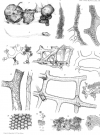
-
Henry John Carter was a British army surgeon serving on Her Majesty's Indian Service from 1842. He also had a keen interest in zoology and geology, furthering our understanding of the geological regions of coastal India as well as the marine sponges living in these regions.
-
102.Dr Henry Vandyke Carter
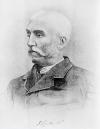
-
Dr Henry Vandyke Carter’s most noticeable contribution to the world of medicine was his deep understanding of human anatomy and detailed illustrations that helped to compile the first edition of Gray’s Anatomy. The book is still the go to guide for physicians 150 years on and it is Carter’s drawings that have helped generations understand the complexity of human anatomy.
-
103.Hieronymus Fabricius
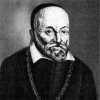
-
Hieronymus Fabricius revolutionised the teaching of anatomy and helped to found modern embryology. He was tutor to William Harvey.
-
104.Hildegard of Bingen

-
Hildegard of Bingen was a medieval mystic and visionary who was also known for her writings on medicine, health and nutrition, and nature. She is one of the earliest women for whom scientific writings still exist.
-
105.Dame Honor Fell
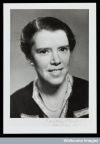
-
Dame Honor Fell pioneered the study of living cells under the microscope and developed the organ culture method. Her most significant work was on the immune system and its role in rheumatoid arthritis. She made fundamental contributions to the knowledge of skeletogenesis (the formation of skeletons).
-
106.Hugh Huxley

-
Hugh Huxley was a British molecular biologist who discovered the mechanism responsible for muscle contraction. The sliding filament theory that Huxley proposed in 1954 has formed the basis of our understanding of how muscles contract for the past fifty years.
-
107.Hugo Merton
-
Hugo Merton was a German zoologist and explorer. He went on an expedition to the Maluku Islands in Indonesia and made many observations about the sea-life there. He was also a victim of the German persecution of Jewish people when he was arrested and sent to a concentration camp before being deported.
-
108.Ivan Pavlov
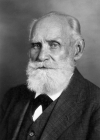
-
Ivan Pavlov was an iconic figure of 20th century science and culture. He is best known for his work in learning and behaviourism in which he conditioned dogs to associate feeding with the sound of a bell. Pavlov observed that the dogs would salivate in response to the cue, meaning that this reflex had become conditioned.
-
109.Jacques Monod
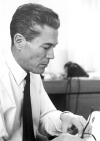
-
Jacques Monod was a Noble Prize winning French biologist, often considered as one of the founders of molecular biology, who is famous for his work on bacterial genetics and protein transport, specifically in E. coli.
-
110.Jacques Yves Cousteau
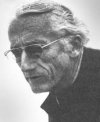
-
Jacques Cousteau was a French naval officer, explorer and conservationist, who was famous for his undersea investigations and for developing equipment used in underwater diving, including the Aqualung.
-
111.Sir James Black
-
Sir James Black made some of the most important contributions to pharmacology in the twentieth century. He developed life changing treatments as well as pioneering a new model of drug design which is now routinely used in the pharmaceutical industry. His work has been widely recognised and in 1988 he won the Nobel Prize for his contribution to pharmacology.
-
112.James Cowles Prichard
-
James Cowles Prichard was a man of many interests, from psychiatry to anthropology to linguistics. He was one of the first people to say that the entire human race and ethnic groups are one single species.
-
113.James Lovelock
-
Although born to parents who were firm believers in education, James Lovelock found himself unable to afford university studies once he had finished school. He completed two years of his chemistry course at the University of Manchester and was then unable to fund the third.
-
114.James Watson

-
In his early life, James Watson was a keen bird watcher and received a scholarship for tuition. He graduated from the University of Chicago at the age of 19 with a B.Sc. in Zoology.
-
115.Jan Ingenhousz

-
Photosynthesis: one of the most well-known and important aspects of biology. It is fundamental to all of plant science, and was discovered by the Dutch-born British physician Jan Ingenhousz.
-
116.Dr Dame Jane Goodall

-
Dr Dame Jane Goodall’s decades of studying Pan troglodytes (wild chimpanzees) in Tanzania have revolutionised how we think about both chimpanzees and ourselves. She established what is now the longest running field research project into chimpanzees and is a campaigner for people, wildlife and the environment.
-
117.Professor Jean Golding

-
Professor Jean Golding designed the world leading Children of the 90s study in genetic research that has led to many discoveries around children’s health.
-
118.Jean Purdy
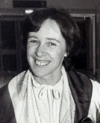
-
Jean Marion Purdy was a British nurse and laboratory colleague of Steptoe and Edwards and assisted in the work of creating the world's first 'test-tube baby'.
-
119.John Addenbrooke

-
John Addenbrooke was born in Staffordshire in 1680, the only child of a vicar. He went to the University of Cambridge at the age of 17, as a ‘pensioner’ – this was a student who paid for their own tuition.
-
120.John Burdon Sanderson Haldane

-
John Burdon Sanderson Haldane was known to friends as Jack and used the moniker JBS in publishing. He was a leading scientist in the 1900s whose mathematical work on genetics and evolutionary biology was critical to acceptance of natural selection.



